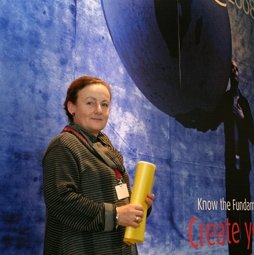Skretting fed salmon yield more fish protein than they consume
800,000 salmon produced at CAC yielded more fish protein than was used to produce their feed, without reducing the omega-3 level in the fish flesh.
Sissel-Susort
Recent research findings from Marine Harvest, Skretting and AKVA group’s Centre for Aquaculture Competence (CAC) in Norway, show commercial salmon farming can be a net fish protein producer. The results from CAC, a large-scale research station where all harvested salmon end up for commercial sale show that limits in the supply of marine raw materials do not need to frustrate future growth in the aquaculture industry, and that salmon farming can produce more fish protein than comes from the wild fish used in the feed.
The objective of the trial, which is currently in progress at CAC, is to fully document the sustainable production of salmon.
“The trials at CAC are a milestone,” said Knut Nesse, Managing Director of Skretting Salmon Feed. “This is the first time we can refer to large-scale trials on fish over an entire generation, where we gain more fish protein in the form of salmon than we use to produce the fish feed. The world’s marine resources must be shared among an ever-growing number of people. In this perspective, the findings open up great opportunities for the aquaculture industry.”
Increased level of alternative raw materials
At CAC, the fish are divided into three groups, which are fed separate diets.
- One of the groups has been fed on feed that is almost identical to Skretting’s normal diet, but with a slightly higher vegetable oil content.
- The other two groups have been given feed where even more of the marine protein raw materials have been replaced with vegetable raw materials.
It is these two groups that are yielding more fish protein than has been used in production of the feed.
Preliminary figures, from the pens that have been harvested, show that the feed that contains fewest marine resources gives just under 1.2 kg top quality fish protein in the form of salmon per kilogram fish protein used in the feed.
Control of the fatty acid levels has been one element of the trials and findings have been positive. The fish measurements that have been taken so far show normal levels of omega-3 fatty acids, including the long chain omega-3 fatty acids EPA and DHA.
“Final figures will be ready nearer to Christmas when the trial is concluded,” says Olav Breck, R&D Manager in Marine Harvest











